Tracking Trackers: Product upgrades and strategic moves from top U.S. solar manufacturers
From OMCO Solar’s new long-range STAR controller to Nextracker’s steel frame acquisition, tracker makers are refining their hardware and broadening their reach ahead of 2026
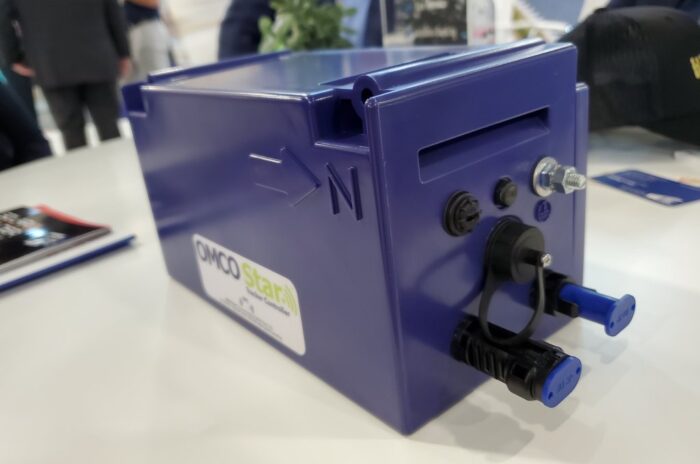
The U.S. tracker market is in constant motion — and we’re not just talking about the hardware. As supply chains mature and utility-scale projects seek lower costs and fewer components, top solar tracker manufacturers are fine-tuning their core products and/or expanding into adjacent areas, all with an eye toward project velocity, reliability, and 100% domestic content for the full PV system. Here’s a look at how OMCO Solar, Nextracker, GameChange, and Array are each positioning their latest tech and acquisitions to shape the next generation of large-scale solar projects.
OMCO Solar completes factory-direct edge
The difference between running conduit across hundreds of acres and skipping it altogether can make or break a solar project’s economics. That’s the pitch behind OMCO Solar’s new OMCO Star Controller, which 1) can run a DC connection in any climate, and 2) communicates using technology that drastically reduces the number of gateways needed in the field.
Eric Goodwin, Vice President of Business Development at OMCO Solar, says the product reflects years of listening to customers about where the real headaches occur. “We spent a lot of time talking to different stakeholders, customers, installers, getting the voice of the customers over about two years, asking what do you need? Where are the pain points? Where are the things that we can look at? And we integrated a lot of that into our design.”
The OMCO Star Controller really does have a starring role in OMCO’s evolution from steel roll former and fabricator to full-system tracker OEM, because it is the final piece in OMCO Solar’s 100% domestic tracker offering, shipping straight from their Phoenix, Arizona facility.
It also took “an immense amount of work for about three years to get it right,” according to the team at RE+ 2025 in Las Vegas. Here’s a bit more we learned in our conversation.
LoRa vs. ZigBee
Most tracker controllers today rely on a ZigBee communication protocol, which limits a single gateway to about 100 trackers due to proximity limitations. That means a 100 MW project with 2,000 trackers could require 20 gateways, each with its own rack, AC power, and extra wiring.
The OMCO Star Controller operates on a sub gigahertz frequency called LoRa (stands for long range) that has a range of over a mile vs. 300 feet with Zigbee. Using LoRa, a single gateway can connect over 1,000 OMCO Star controllers.
From there, “the challenge then is how to get all of that data from all those trackers into one spot, one gateway,” says Matt Kesler, OMCO Solar’s Vice President of Solar Technology. “So, we developed proprietary ways to package that data and send it. … It’s not that you have more bandwidth, you just [decide] how you use your bandwidth.”
Steve Ouandji, OMCO Solar’s Sr. Product Development Engineer, explains that this proprietary sequencing avoids traffic jams. “Our control logic establishes a deterministic sequence for polling each row, by inserting a precise millisecond offset between transmissions, we prevent packet overlap and maintain consistent, collision-free data flow across the network.”
DC-only design and cold climate reliability
The OMCO Star Controller also eliminates AC runs to the rows by running on DC-only. Goodwin notes that this is especially important in northern climates. “If you’re able to do a DC tracker, and you’re able to keep the batteries warm … then you’re not having to do any trenching, you’re not having to run wire. It also has an impact on some of the other balance of system components. That’s really where we focused our development, and that’s why it took a little bit longer to get it to market.”
Battery design was another point of emphasis. “We’ve really done a lot of stuff with the lithium iron phosphate (LFP) battery. You can replace your battery like a remote on a TV instead of taking off the whole controller off to RMA it back. You don’t have to recommission it. It’s super simple.”
Reliability over the long haul
For Kesler, reliability meant rethinking the user interface. “For example, we’ve designed it without the buttons. Some other controllers have a bunch of buttons. Well, five years from now, those buttons may or may not still work. Steve and the team have designed an app that serves as the buttons. That also reduced costs.”
Ouandji points out that LoRa solves other pain points ZigBee cannot. “From a reliability standpoint, Zigbee networks can experience instability due to a few inherent limitations. One issue is electromagnetic interference, which can disrupt signal integrity and lead to communication errors. The other is physical obstructions such as a structural element or even a module tilt angle that can attenuate or block the signal path, ultimately degrading a network performance that relies on mesh topology and causing communication loss.”
“LoRa is one of the few communication protocols out there that has penetration abilities,” Ouandji continues “Its Built-in Adaptive Data Rate (ADR) feature dynamically adjusts transmission power and speed to maintain stable, efficient communication, even through physical obstruction such as concrete walls, steel and other dense materials or challenging environments.”
The controller platform is also built to evolve with digital tools. “Most of it will be on the operation side,” Ouandji explains. “To maximize system uptime and reduce cost, we leverage machine learning to continuously collect and analyze operational data, enabling the system to learn its normal behavior and predict potential failures before they occur.”
That predictive capability will lean on digital twin technology. “We are using Digital Twins to create a virtual replica of the physical system, allowing both to operate in sync. Any deviation or anomaly detected in the physical space is immediately reflected in its virtual counterpart. This synchronization between the physical and digital layers enables our machine learning models to anticipate faults, performance and support proactive maintenance.”
Utility-scale tracker launch
The distributed generation segment has fueled OMCO’s growth in the last two years – they remain the market leader in fixed-tilt utility scale and DG markets. With the controller live and a 100% domestic content, factory-direct tracker ready, OMCO Solar is now scaling into 100+ MW projects.
“We are working with multiple customers on utility scale projects for 2026 start of delivery. We’re excited to make some announcements soon on utility scale projects.”
13 GW of factory direct US manufacturing capacity and the shortest lead times in the industry are a differentiator for us, duplicating for tracker from our success with fixed tilt utility projects.
That expansion includes new component manufacturing as well. “The other announcement, really, that we’re making is we’re going to be making ground screws starting in second quarter 2026 in our Huntsville, Alabama facility,” Goodwin says.
Create Energy unveils its integrated module + tracker system

We first heard about Create Energy’s evolutionary plans for the module-plus-tracker interface late last year. At RE+ 2025, the world got its first look at what CEO Dean Solon has cooked up — a next-generation system where the mechanical and electrical connections are integrated directly into the module. It simply clicks into the torque tube, and you’re done.
Explaining the system at RE+, Solon rattles off the typical list of solar site construction tasks:
- First, cut and excavate. That’s a crew.
- Next crew pounds the posts.
- Next crew bolts the bearing caps on.
- Next crew brings the torque tubes.
- Next crew brings the module vertical steel.
- Next crew brings the modules and loosely tightens the bolts.
- Next crew comes and torques them.
- Next crew comes and marks them.
- Next crew comes, ties the modules together.
- Next crew comes in and lands all the eBOS.
- Next crew comes and dresses everything and cleans up.
“That’s between seven and 10 separate crews to build one row,” Solon says.
Compare that to Create Energy’s system:
- Pound the posts, automated or not.
- Torque and bearings are preassembled and dropped in place.
- The module clicks on.
“No nuts, bolts, vertical module steel, U-clamps, Belleville washers, rivets — all gone. … There’s nothing to check. No bolts to tighten. No electrical joints to inspect,” Solon says.
The only challenge left for that module-clicking-into-torque-tube design is waiting for testing to catch up. “UL and Intertek are [unsure how to test it] because they’ve never seen anything like this before.”
Meanwhile, a Create Energy product that has earned a UL listing is the company’s unique combiner box / disconnect that sits at the end of a tracker row — a product Solon is so confident in, no one is allowed to open it.
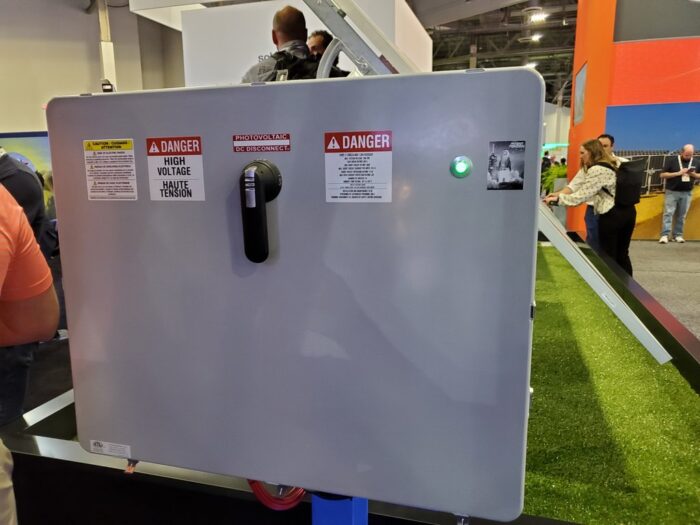
“When you install my eBOS, either our combiner or load break, if you ever open it again, you’ve voided the warranty. Because once you install my new systems, it never needs O&M service ever again. We are changing the mindset, from reactive monitoring to pro-active monitoring. I’ll give you a 10-year, limited-lifetime warranty on the eBOS.”
That combiner also houses the tracker controller, motor, charge controller, and acts as the communication hub for anything tied to the module + tracker system.
“It’s the IV curve tracer. It’s a cell or Wi-Fi modem. It’s talking to the robotic mower. It’s talking to the weather station. It’s talking to the moisture sensors in the ground. It’s one common board across the entire platform,” Solon says, noting that for any Create Energy disconnect or combiner, if it’s rated at 600 amps, all 600 are usable. “We have no derate table!”
Even though you can’t open one of these boxes after install, all the data coming out of it is yours at no extra charge.
“My focus is not on monetizing recurring-revenue models — once you buy my hardware, it’s yours,” Solon adds. “Send all the data wherever you want. It’s your data. We will have software add-on packages that the customer can select. First and foremost our objective is having the most reliable hardware available globally.”
“We’re not just rewriting the renewables playbook—we’re reshaping the entire energy sector,” said Joseph Fahrney, Chief of Staff. “Our products are designed for durability and effortless installation, because innovation should never be complicated, that is the legend of Dean Solon innovation.”
Create Energy, under Solon’s leadership, continues driving innovation at full throttle — from small components like PV connector protection sleeves, to this evolutionary step in solar construction. And they say this is just the beginning.
Nextracker evolves beyond core tracker business
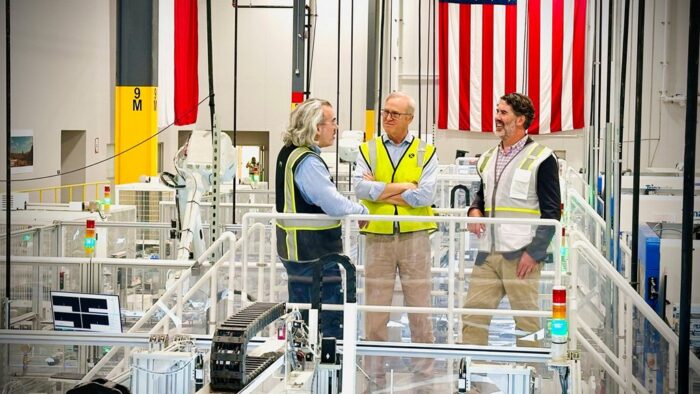
Through acquisitions and internal innovation, Nextracker is building out a full arsenal of components that pair with its trackers (eBOS) and some that go beyond (steel module frames).
At RE+ 2025, the company launched its proprietary NX PowerMerge trunk connector, a next generation DC power component. It is the first eBOS product added to the Nextracker eBOS portfolio since its acquisition of Bentek earlier this year.
Reducing points of connection is generally a PV design best practice, and NX PowerMerge accomplishes that. The NX PowerMerge trunk connector is a 2kV-ready solution for PV string-to-trunk bus connections. With 400A+ ampacity, it supports up to eight tap wires (6-8 AWG), and is compatible with trunk conductors up to 1000 kcmil.
“We are excited to introduce NX PowerMerge to advance the electrical architecture of solar power plants,” said Dan Shugar, founder and CEO of Nextracker. “Customers will appreciate faster and more flexible construction, greater reliability, and alignment with the attributes of a modern grid. This is the kind of highly scalable technology that can help solar power continue to grow its share of the global power generation market.”
NX PowerMerge is available for purchase now with deliveries beginning in spring 2026.
Reframing things
Even more notable in my book is Nextracker’s acquisition of Origami Solar, a pioneer in roll-formed steel frames that we have profiled many times in Solar Builder. Steel PV module frames are a compelling alternative to traditional extruded aluminum frames, especially because they are more easily produced in the United States.
In fact, as I was prepping this roundup, Nextracker found its first steel frame integrator in T1 Energy Inc. The companies announced a strategic framework agreement to use Nextracker’s patented steel module frame technology for T1 Energy’s new 5-GW G1_Dallas solar manufacturing facility.
“Clearway applauds Nextracker’s technology and manufacturing program to bring next-generation, American-made steel module frames to support the domestic photovoltaics (PV) industry. These new steel frames increase the domestic content of the module, create a stiffer, more reliable module, and with Nextracker’s ongoing innovation, will enable faster installation rates compared to legacy aluminum frames,” said Ross Heiman, vice president of engineering at Clearway Energy Group.
With Nextracker’s backing, the use of steel as a frame material also has the potential to unlock innovation around new solar panel mounting approaches, including robotic assembly, with related improvements in mounting speed and labor cost.
To support this initiative, Nextracker plans to increase its existing U.S. steel frame capacity in the Midwest with additional manufacturing lines in Texas. This would complement Nextracker’s Texas footprint of more than a dozen manufacturing partners that produce key solar tracker components.
GameChange introduces rivet-mounted modules, is safe-harboring transformers

GameChange Solar has introduced a rivet connection option for module mounting on its Genius Tracker system — an alternative to traditional bolted module connections.
“By integrating rivet-mounted modules into our Genius Tracker system, we are providing customers with greater flexibility in how they build and maintain solar projects,” said Vaibhav Joshi, Managing Director, Oceania and SEA at GameChange Solar. “This innovation allows for streamlined installation and long-term reliability, making solar deployment even more efficient.”
Most PV projects use bolted connections between the racking system and modules. With rivets, GameChange is providing a non-torqued connection to pre-punched module mounting holes. This could reduce installation time and eliminate the need for torque checks over the lifespan of the project. Per testing at Intertek and GameChange Solar’s Research and Design Facility, the two-piece rivet was found to be compliant with the applicable sections of the UL 2703 standard.
Meanwhile, GameChange BOS transformers are enabling solar developers and EPCs to preserve over 380 MW of projects under the revised “construction start” rules, according to the company. GameChange BOS is manufacturing and documenting the installation of custom-built transformers, and transformer manufacturing qualifies under the physical work provision through the remote start of construction. In Q2, GameChange BOS solutions safe-harbored 76 projects totaling over 380 MWdc of solar capacity. The company has a dedicated team to time-stamp and certify all work for IRS compliance, with the capacity for 250 more projects this year and up to 600 projects in 2026.
ARRAY Technologies now ready for fixed-tilt and 2000-Volt solar projects
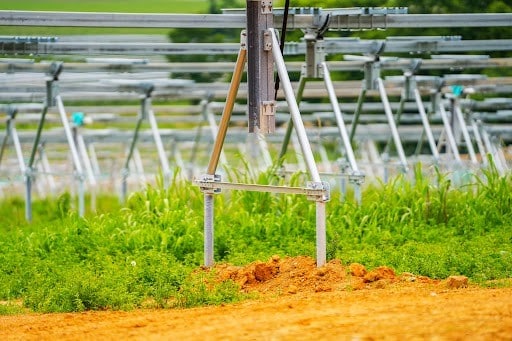
During RE+, ARRAY Technologies affirmed that its DuraTrack and OmniTrack systems have been verified by Intertek to be compatible with 2000-volt (2kV) module-wired systems. By increasing system voltage from 1,500V to 2,000V, solar projects may reduce electrical losses, lower material costs, and improve overall system performance.
“As the industry moves toward 2,000-volt architectures to enhance efficiency and reduce costs, our tracking systems are already equipped to meet these evolving needs,” said Aaron Gabelnick, chief strategy and technology officer at ARRAY Technologies. “Our customers can be confident that ARRAY is delivering technology designed for the future, today.”
On the other end of the spectrum, ARRAY acquired APA Solar — a solar racking and structural solutions provider known for its ground screws and structural frame. ARRAY sees significant opportunities for commercial synergies here, and will enhance the ability of ARRAY to serve a broader range of utility-scale and commercial solar projects across North America and beyond.
“This is a pivotal moment for ARRAY,” said Kevin G. Hostetler, chief executive officer at ARRAY Technologies. “APA brings a strong track record of innovation, customer service, and engineering excellence. Together, we will accelerate the deployment of utility-scale and distributed solar energy by offering a more comprehensive and flexible portfolio of solutions to a broader range of customers.”
APA will continue to operate under its brand as a strategic business unit within ARRAY Technologies.
“This transaction will allow us to scale faster, drive more transformative innovation, and deliver even greater value to our customers,” said Josh Von Deylen, chief executive officer at APA. “By combining APA’s engineering expertise with ARRAY’s global reach and resources, we’re poised to make a significant impact on the future of clean energy.”




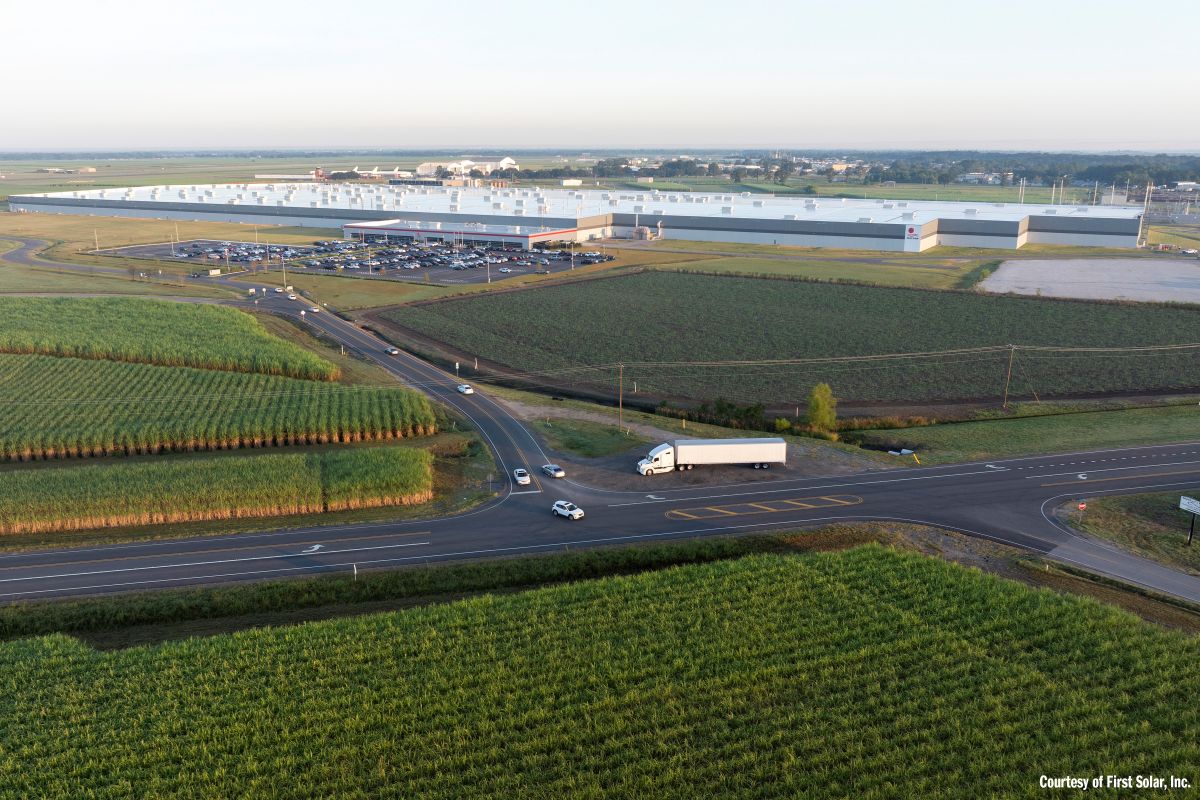
Comments are closed here.